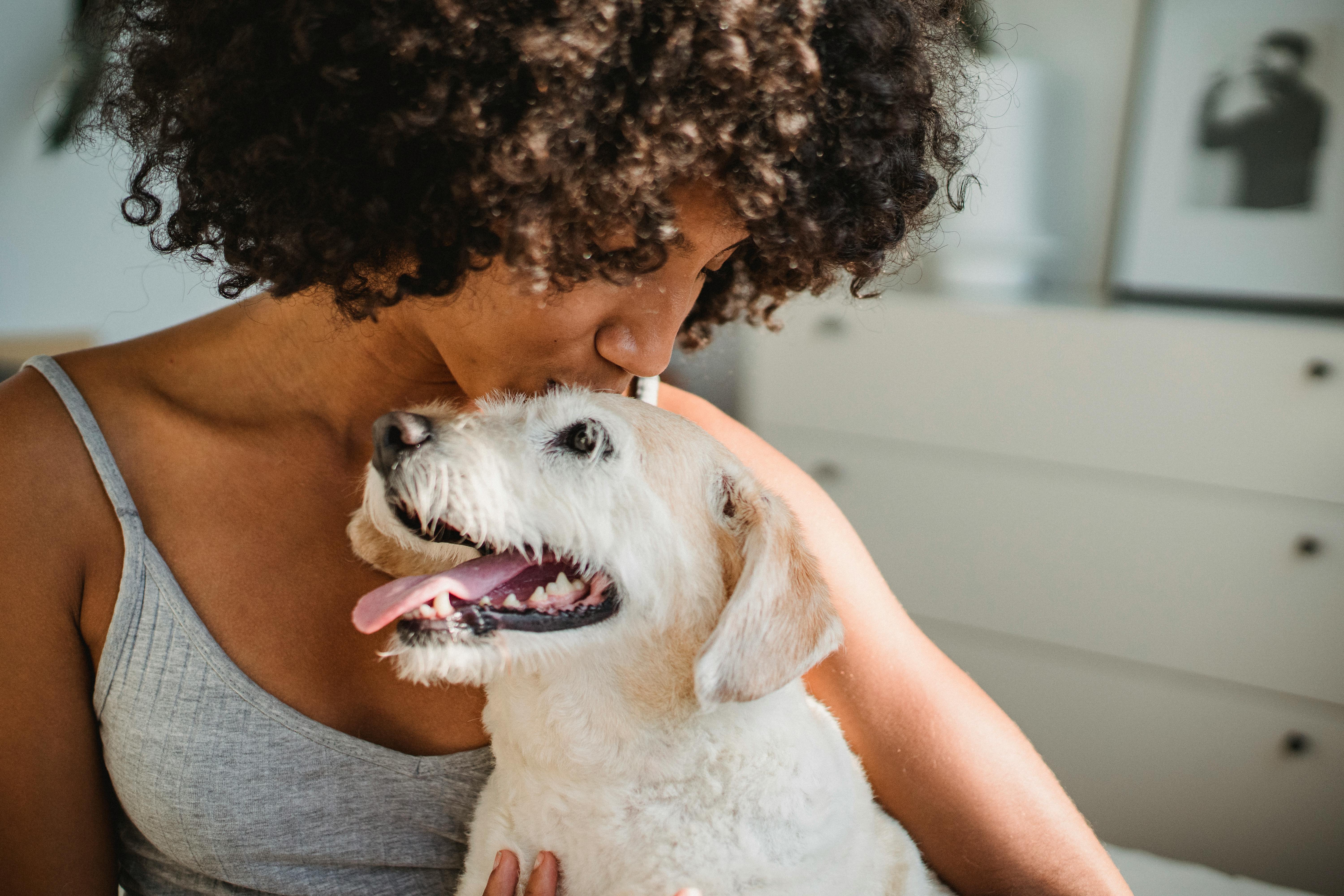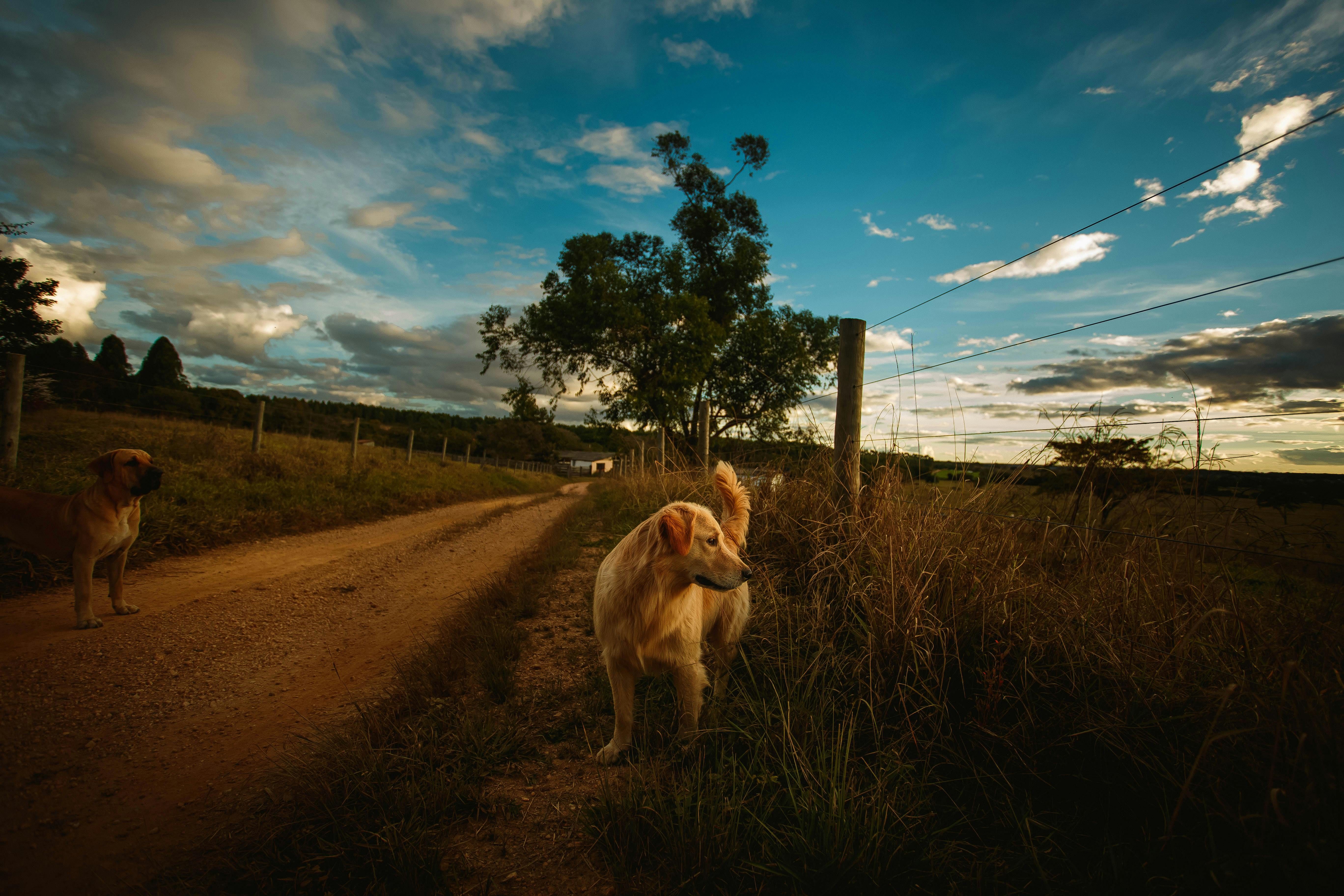Fear of thunder and other loud noises is a common problem in dogs. No one really knows why some pets are afraid of noises and others are not. Dogs can easily develop these terrible sensitivities to sounds that tend to get worse as the dog ages.
If left untreated, the fear of loud noises can easily develop into a phobia (an excessive, persistent, and irrational fear response to stimuli). The good news is that these fear-related issues can be successfully resolved with proper training and a lot of patience.
A recent small study found that certain breeds of dogs are more prone to developing noise phobias than other breeds. Many of these at-risk dog breeds include breeds such as: German Shepherds, Collies, Beagles, and Basset Hounds.
Note that more research needs to be done in the area of fear of thunder, as this particular single study was quite small overall. This study had another interesting finding: that dogs suffering from separation anxiety were also more likely to have phobias of noise and thunderstorms.
What are the typical signs of a noise phobia, such as a fear of thunder?
Individual pets may display their particular signs of noise phobias in a number of ways, such as: panting, pacing, drooling, chewing, shaking or trembling, squeezing anal glands, barking, urinating/pooping, trying to escape or hide.
Regarding thunder and thunderstorms, dogs may be afraid of other triggering events associated with storms, such as: lightning, heavy rain, static in the air, a change in barometric pressure, odors associated with thunderstorms, ionic changes. and many other things that you are not even aware of.
Another thing to consider is the attitude of the owner during the storm. You must act as if nothing unusual is happening. If the actual owner is also nervous during storms, his pets pick up on it and may have a stronger fear reaction than if the owner was really calm during the storm. This one thing alone can easily influence the severity of the dogs fear during the storm.
How are thunder phobias treated?
First of all, remember to refrain from giving any type of reward or punishment. This is probably the most important thing to follow if your dog is afraid of thunder. Petting or comforting a fearful thunder-phobic pet during a thunderstorm is truly positive reinforcement of undesirable behavior. By trying to comfort the pet during the storm, you may be signaling to the dog that the storm really is something they should really be afraid of, the exact opposite of what you want the pet to feel!
Don’t ignore your fearful dog either, just the fearful behavior. If your dog comes to you, let him share your company, but don’t coddle him while he’s with you. He doesn’t punish the pet for showing fear, but don’t reward it either. Doing either will probably only increase your current anxiety level.
What else can be done for a dog afraid of thunder?
Three of the most commonly used options are various medications, changing the dogs’ real environment, and behavior modification therapies.
Medications: These can be given individually or in various combinations. If your pet has a problem with thunderstorms, check with your vet for medication suggestions and dosage recommendations. Your vet will probably suggest that you treat your dog with some type of tranquilizer. Please note that these medications must be administered hours before the storm is forecast.
Alternative therapies, natural herbal blends, such as Rescue Remedy, are often recommended. Another one I’ve heard an AKC judge use is peppermint oil, which can be purchased at any health food store. Put a drop or two of oil on the bottom of each foot, right on the individual pad, a few hours before the storm hits. Like anything else, sometimes they work, sometimes they don’t in particular individual animals.
Change the dogs environment: Changing the dogs environment can reduce the volume level of the sound of thunderstorms and help make the pet less aware of what is happening. Some things you can do are:
o turn on calming music or the television to mask storm noises until the storm has passed,
or rub your dog’s coat with a fabric softener dryer sheet to decrease static in his fur,
o cover windows so the dog cannot see lightning and other storm-related activity,
o keep your dog away from glass doors and windows,
o keep exterior doors locked and closed, and
o Do not confine your dog to a small space such as a crate (a frightened dog could be seriously injured if it tried to escape).
Behavior Modification Therapies – Many special techniques are used to help change the dog’s overall response to noise (in this case, thunder). Counterconditioning is one form. Here the actual negative stimulus is associated with a positive event enjoyed by the pet. For example, the only time the dog gets his favorite treat is right before and during a thunderstorm.
Desensitization is another frequently used method of behavior modification. In the case of thunder and noise phobias, the dog is taught to be quiet when the noise level is low and then, over time, the noise level will gradually increase. An example of this would be getting a storm CD and playing it around your house so that the dog gets used to the sounds over a long period of time, gradually increasing the volume while keeping your dog calm. This is a very slow process in general to be effective, so be patient: you probably won’t know it’s working until one day you simply realize your dog isn’t scared anymore.
In general, it’s important to note that fear of thunder and lightning storms, as well as other noise phobias, are very common problems in dogs (and some cats). Medications, changing the pet’s environment, and using various behavior modification therapy techniques are helpful in reducing overall fear in dogs.
Talk to your vet or a local animal behaviorist or trainer in your area if your dog is showing signs of some form of noise phobia. These pet professionals can help you develop a treatment plan for your own individual pet to help you overcome your Fear of Thunder or at least treat it in a way that is more comfortable for both of you.



